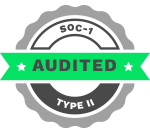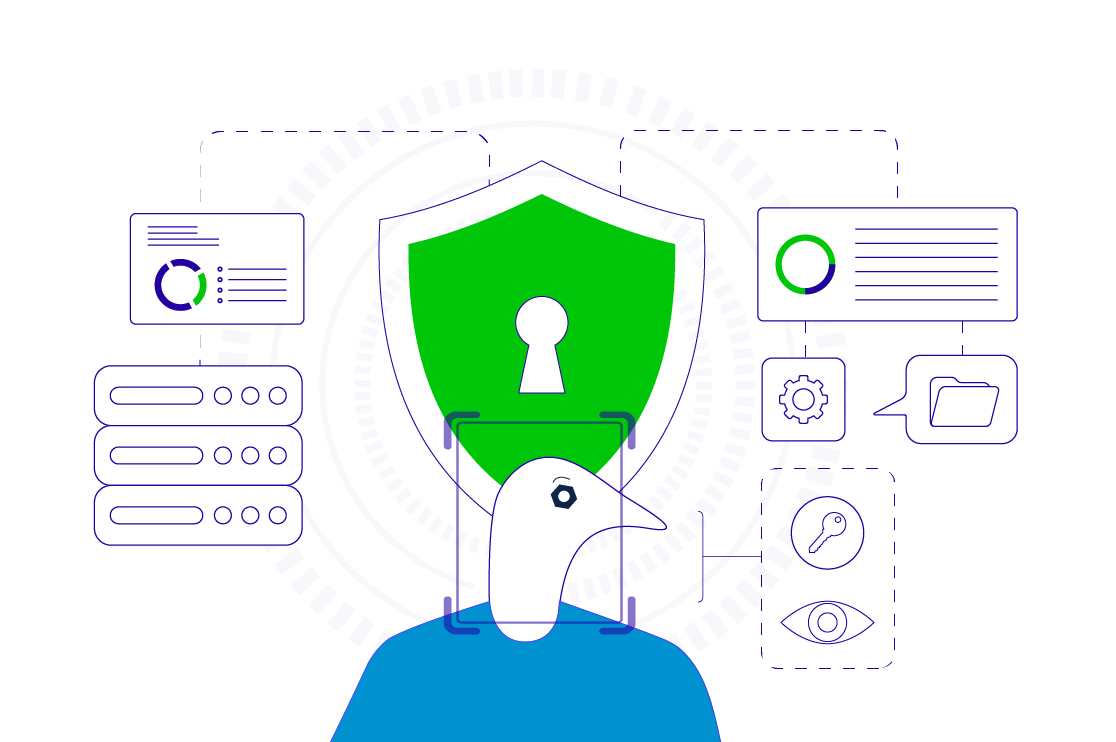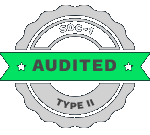Role-Based Access Control (RBAC) is a C-suite topic because it directly addresses top-level business risks related to financial costs, reputation, and legal exposure. It is no longer just an IT issue, but a strategic business imperative that requires executive oversight and investment. C-suite executives are held accountable for the financial and reputational damage that can result from a cybersecurity incident.
A Quick Recap on RBAC: Role-Based Access Control, or RBAC for short, is a process/strategy to control network access based on the individual users’ roles. This strategy facilitates limited or “need-to-know-basis” access to information relevant to their job roles. This helps in preventing unwanted access to or leakage of highly sensitive organizational information.
RBAC for C-suite strategy is a widely accepted access control model throughout the IT & tech industry. As per a recent survey conducted, 94.7% of organizations have utilized/implemented RBAC at some point. And around 86.9% of organizations state that it’s their currently incorporated platform.
RBAC for enterprises grants system and data access based on a user’s job role, not their individual identity. The demand for this kind of strategy is growing as it improves security by enforcing the principle of least privilege, simplifies user management, and streamlines processes like onboarding and auditing.
Missteps in Role-Based Access Control That Hurt Enterprises
Identity and access management (IAM) is an integral part of security systems. Without proper authentication and authorization, it would be impossible to practice cybersecurity principles such as zero trust and least privilege.
By now, most organizations have a firm grasp on the identity part of IAM, including concepts like multi-factor and token-based authentication. However, implementing access control remains challenging as methods, such as role-based access control, have proven inadequate in many scenarios.
Let’s look at the top 5 problems related to RBAC for C-suite strategy that organizations might be facing or can face in the coming years.
Distributed IT systems
IT systems nowadays often consist of multiple cloud and on-premises networks. These systems can be geographically scattered and include numerous devices, assets, and virtual machines. Access is granted to all these devices, and keeping track of them can be difficult.
Policy management
Decision-makers within the organization write policies, and the IT department translates the intended policies into code for implementation. Coordination between these two groups is essential to keep the access control system up-to-date and working as intended.
Excessive permissions and exceptions
In a competitive market, companies value the agility and flexibility that cloud workloads offer. Security is often overlooked in a rush to reach a fast time-to-market. Administrators may grant unnecessary permissions to individual users to prevent any delays in development.
Monitoring and reporting
Organizations must continuously monitor access control systems to ensure compliance with internal policies and government regulations. Any violations or changes to the RBAC for C-suite strategy should be identified and reported immediately. Failure to do so could result in confidential information falling into the wrong hands, leading to fines under privacy laws.
According to GlobalScape, corporations lose an average of $4 million in revenue due to a single compliance violation.
The RBAC for enterprises methods offer various degrees of granularity. Choosing the appropriate access control model for your organization lets you walk the thin line between adequate security and employee productivity.
Best Practices for CXO Oversight
CXO oversight of rbac model involves establishing a RBAC for C-suite strategy framework that aligns the strategies with business objectives, minimizes risk, and maintains regulatory compliance.
A hands-off approach can lead to “role explosion” and security vulnerabilities. Effective oversight is critical to ensure the RBAC system functions securely and efficiently across the entire organization.
How BluEnt Helps Operationalize Best Practices for Role-Based Access Control?
RBAC for C-suite strategy works best when it’s not just a policy, but an embedded process backed by automation, visibility, and accountability. That’s where BluEnt steps in.
With BluEnt, you can:
Build Role Structures Intelligently: Define and refine roles using real access data, not guesswork.
Automate User Access Reviews: Schedule recurring UARs with intuitive dashboards, eliminating spreadsheet fatigue.
Detect Privilege Creep Early: Get alerts when user access exceeds defined baselines or when roles overlap.
Align Roles with Compliance: Map access roles directly to compliance controls for HIPAA, SOX, ISO 27001, and more.
BluEnt takes the guesswork out of RBAC for C-suite strategy, helping you move from fragmented access management to a resilient, risk-aligned framework, without disrupting business operations.
Balancing Access and Security
To balance access and security using RBAC for C-suite strategy model, organizations must implement clear, effective roles that align with the privilege principle, while actively managing the inherent challenges of RBAC over time.
The challenge of balancing access and security
The central paradox of the RBAC for C-suite strategy is that too much restriction can slow down productivity, but too much access can lead to catastrophic security issues. RBAC aims to solve this by managing permissions based on job functions, but it can create several problems if not carefully implemented:
Administrative burden: In large organizations, the process of defining and managing roles can become a time-consuming task for IT administrators.
Inflexibility: RBAC can be too rigid for dynamic business needs. For example, a user temporarily helping another department requires a new, temporary role assignment, which can be an administrative hassle.
Role explosion: This occurs when too many narrowly defined roles are created, leading to a complex and unwieldy system that is hard to manage and audit.
Privilege creep: As employees change roles over time, they can accumulate more permissions than necessary if their old access rights are not properly revoked. This increases the security risk.
Lack of context: A standard RBAC system does not consider dynamic factors like the user’s location, time of day, or the specific data sensitivity, which limits its security.
RBAC for C-Suite Strategy Checklist to Be Followed
Key steps include analyzing your environment and workforce, creating a clear role in hierarchy, applying the principle of least privilege, and using automation to manage assignments and reviews.
Planning & analysis
Role & permission definitions
Implementation & assignment
Testing & ongoing management
A comprehensive RBAC implementation checklist involves defining roles and permissions, assigning roles to users or groups, and regularly auditing and testing the implementation.
RBAC Metrics Executives Must Demand
For executives, metrics for RBAC for C-suite strategy should focus on three key areas: security and risk reduction, operational efficiency, and oversight compliance. The most important enterprise data security metrics reveal whether RBAC for CXOs effectively lowers organizational risk, streamlining access management, and maintaining an audit-ready posture.
These metrics can be categorized 3 types:
Security & risk metrics: These metrics help executives understand their security posture and the direct impact of their RBAC strategy on reducing the risk of a data breach or insider threat.
Operational Efficiency metrics: These metrics demonstrate the return on investment of RBAC by quantifying improvements in IT management and user productivity.
Compliance & audit metrics: These metrics provide objective evidence that the RBAC program is meeting regulatory and internal governance requirements, which is essential for audit readiness.
By monitoring these key performance indicators, leaders can move from a reactive, manual access management system to a proactive, automated, and policy-driven enterprise data governance framework.
Ultimately, implementing role-based access control transforms RBAC from a technical requirement into a strategic asset that strengthens security, ensures regulatory compliance, and drives overall business efficiency.
Conclusion
Role-Based Access Control (RBAC) is more than a cybersecurity measure. It’s an enterprise risk management strategy. For executives, it offers a controlled, compliant, and auditable way to safeguard corporate data while maintaining business agility.
By operationalizing RBAC for CXOs through automation, monitoring, and governance, leaders can minimize risk exposure, strengthen compliance readiness, and unlock measurable ROI from secure digital transformation.
In short: RBAC for C-suite strategy, when governed strategically, shifts from IT overhead to a competitive business advantage.
FAQs
Why should C-suite leaders prioritize RBAC governance?C-suite leaders bear ultimate accountability for their organization’s financial and reputational resilience, especially in the face of regulatory scrutiny and security threats. By prioritizing RBAC governance, CXOs can ensure that access to sensitive systems and data is strictly limited to what is needed for each role, reducing insider risks and making compliance with regulations like SOX, HIPAA, or GDPR more straightforward.
What are the common pitfalls of RBAC implementation?RBAC projects can falter without proper strategic planning and continuous review. Key pitfalls include “role explosion” (too many narrowly defined roles causing complexity and confusion), granting excessive permissions to speed up projects, overlooking the need for audit trails, and failing to coordinate between business stakeholders and IT.
How do RBAC metrics help executives?RBAC metrics transform technical implementation into measurable business outcomes. Security metrics help CXOs track incidents related to access misuse or privilege creep, operational efficiency metrics quantify reductions in admin time and support calls, and compliance metrics provide readiness proofs.
How often should RBAC reviews be conducted?Regular RBAC reviews, quarterly or major organizational changes, are vital for sustaining security and compliance. Automated user access reviews (UARs) can proactively catch privilege creeps as employees change roles or leave the organization, ensuring permissions remain current and aligned with policy.
What distinguishes a modern RBAC approach from traditional implementations?A modern RBAC approach is characterized by automation, continuous monitoring, data-driven definition of roles, and seamless integration with compliance controls. Today’s best-in-class systems use real-world access patterns to adjust role definitions, provide dashboards for executive oversight, and automatically flag exceptions.













